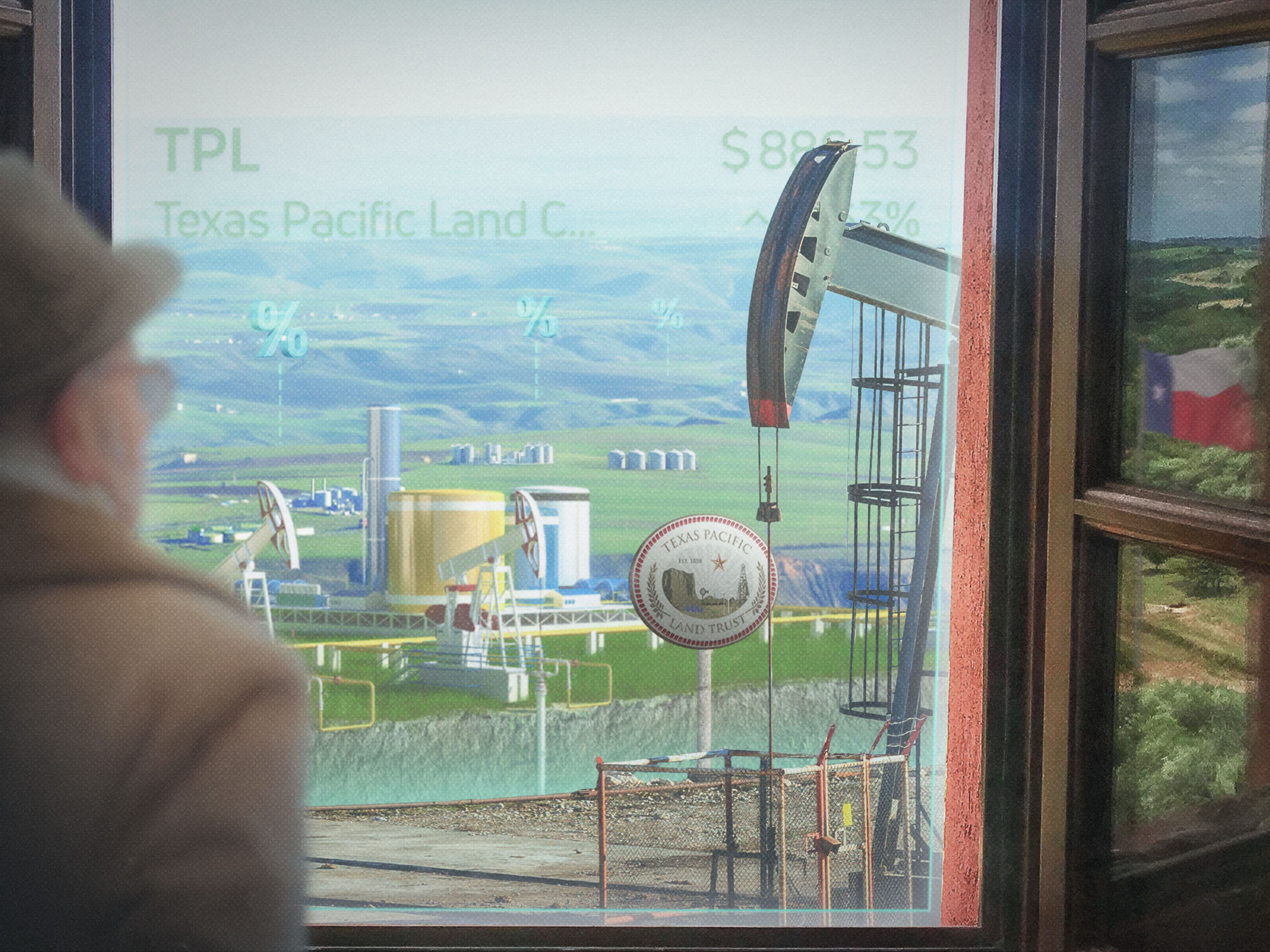Last week, we discussed the story of Axon Enterprise (NASDAQ: AXON) and its surprising status as the No. 3 performer in the S&P 500 index over the past 10 years.
Now have a look at an even more obscure stock whose return wasn’t far behind Axon’s: Texas Pacific Land (NYSE: TPL). It appears to be the largest private land owner in the state, with 873,000 acres across the oil-rich Permian Basin.
TPL’s stock has returned an annualized 37% over the past 10 years, according to Morningstar, almost triple the 14% return for the S&P 500 index. The company was added to that index last year. It has a market cap of $20 billion and no debt.
TPL makes money on oil and gas royalties and water sales. Much of the Permian Basin’s oil and gas is produced by fracking, and recall that fracking requires copious amounts of water. TPL can provide that. And it helps oil producers manage the waste water that results from fracking, selling storage space to the producers.
Buffett liked TPL as a teenager
TPL was the second stock Warren Buffett ever bought, as a young teen in the early 1940s (His Berkshire Hathaway (NYSE: BRK) doesn’t own it now). TPL began in 1888 following the bankruptcy of Texas and Pacific Railway. It was formed to dispose of the railway’s 3.5 million acres of land holdings. Obviously, not all the land was dumped, hence the current Permian Basin holding.
That basin has been very good to TPL and others. It is the biggest and highest-producing oil field in the U.S., accounting for about 45% of the country’s oil output. The recent decline in oil prices (11% over the past six months) has led to speculation that Permian’s oil and gas production has peaked.
But TPL doesn’t see it that way. “We don’t have a crystal ball and can’t say for sure what commodity prices will be in the near term,” TPL CEO Tyler Glover said in the company’s earning call earlier this month. “However, we are certain that the Permian remains a world-class resource…. The Permian still fosters a vibrant entrepreneurial industry.”
TPL stock has dropped 35% in the past six months amid the oil price slide. But TPL earnings continue to rise. Its revenue climbed 11% in the first half of 2025 from a year earlier, to $383.5 million. Net income gained 3% to $236.8 million.
Data centers are potential customers
In addition to energy producers, TPL counts battery firms, wind farms, solar arrays and bitcoin miners among its tenants. Next up could be data centers, which have massive power needs. They should appreciate Permian Basin natural gas prices that are sometimes negative, giving them a cheap source of energy. And TPL’s water would be helpful for cooling their power plants.
“There’s been a lot of talk about data centers, and that’s something that we’ve been working on for some time now,” Glover said in an earnings call last year. TPL’s work on bitcoin-mining computer centers gives it a leg up on servicing data centers, he said. “We know what it takes to negotiate these things.”
Explaining what TPL has to offer, Glover told The Wall Street Journal, “Where we can create some value there is to package the land with access to power, water and fiber and put that in front of a developer, kind of like what we’ve done with the oil-and-gas industry.”
Energy is often a volatile industry, but TPL appears well positioned for continued success.




Comments